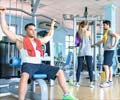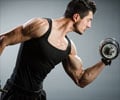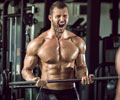- Opt for moisture-wicking materials to stay dry and comfortable
- Choose gear that supports movement and prevents injury
- Advanced features like compression aid in blood flow and muscle recovery
The Role of Sports Clothing in Thermoregulation, Comfort, and Performance During Exercise in the Heat: A Narrative Review
Go to source). A fundamental attribute of athletic apparel is the choice of materials. These garments are predominantly crafted from synthetic fabrics, offering superior flexibility and responsiveness compared to natural fibers. Features like rapid drying capabilities significantly enhance one’s workout experience. Moreover, athletic attire encompasses a wide range of options, including leggings, shorts, tank tops, jackets, and long-sleeve shirts, all constructed from performance fabrics that optimize athletic performance.
compression clothing can boost blood flow and reduce muscle soreness? #fitnessfashion #performancewear #medindia’
Let’s explore key guidelines for selecting the optimal workout gear and the science behind its role in enhancing performance and preventing injuries.
Choosing Right Attire for Optimal Comfort and Safety
Choosing the right workout attire is not just about fashion; it significantly impacts your performance, comfort, and safety during exercise. Here are some key guidelines to consider when selecting workout clothing:1. Fabric Choice
Avoid 100% Cotton: Cotton absorbs moisture and can become heavy and uncomfortable during workouts. Opt for fabrics like dry-fit or moisture-wicking materials that keep you dry and comfortable by moving sweat away from your skin.
Sweat-Wicking Fabrics: Look for fabrics designed to wick moisture away, helping to regulate your body temperature and prevent discomfort caused by sweat.
Avoid Loose, Baggy Clothing: Loose clothing can get caught in machines and may hinder movement during exercises like lunges or squats. Choose well-fitted attire that allows freedom of movement without being restrictive.
Sports Bras: For women, a well-fitted sports bra is essential for comfort and support. It should be snug but not overly tight, providing proper support during workouts.
Running: Choose running shoes that fit properly and provide adequate support for your feet. The right shoes can prevent discomfort and injury during running.
Yoga/Pilates: Opt for stretchable and form-fitting clothing that allows ease of movement without riding up or causing discomfort during poses.
4. Seasonal Considerations
Layering: In colder temperatures, layering allows you to adjust your clothing according to your body temperature. Choose moisture-wicking base layers and insulating outer layers.
Sun Protection: For outdoor workouts, select clothing with built-in UV protection to shield your skin from harmful sun rays.
5. Quality and Durability
Invest in High-Quality Gear: Quality workout clothing is designed to enhance performance, provide comfort, and last longer. Look for durable materials that can withstand frequent washing and maintain their shape.
6. Footwear
Choose Activity-Specific Shoes: Different activities require different footwear. Select shoes designed for running, walking, or specific sports to ensure proper support and minimize the risk of injury.
7. Consider Personal Preferences
Style and Color: Choose colors and styles that make you feel confident and motivated. Color psychology suggests that certain colors can affect mood and energy levels, so select colors that align with your workout goals.
8. Test Before Buying
Try Before You Buy: When purchasing workout attire, try them on and perform some movements to ensure they are comfortable and functional for your chosen activities.
Key Features for Enhanced Performance
Exploring the scientific aspects behind the importance of proper gym attire can provide valuable insights into selecting the right workout gear.1. Injury Prevention
Wearing appropriate clothing can help mitigate the risk of injury during workouts. Specifically, compression garments aid in maintaining normal blood flow and minimizing lactic acid accumulation.
2. Enhanced Blood Flow
Compression apparel is designed to improve circulation by exerting gentle pressure on veins, facilitating increased blood flow and ensuring optimal heart function. This improved oxygenation is crucial during workouts, as adequate oxygen supply to muscles helps sustain energy levels and reduce fatigue. Effective oxygenation is pivotal in maintaining proper form during exercises, as fatigue can compromise posture and increase the likelihood of injury. Incorporating compression gear for your running promotes better blood circulation, particularly beneficial in cold weather conditions when blood flow to extremities diminishes.
3. Lactic Acid Control
Insufficient oxygen levels can lead to the buildup of lactic acid, causing muscle stiffness and soreness post-workout. Compression clothing aids in improving oxygen levels, thereby reducing lactic acid accumulation during physical activities.
4. Sweat-Wicking and Breathability
Regardless of the exercise type, sweating is a natural response during physical exertion. Moisture-wicking fabrics play a crucial role in regulating body temperature and preventing overheating.
5. Heat Regulation
Excessive heat during workouts can lead to increased heart rates and discomfort. Effective moisture-wicking fabrics facilitate sweat evaporation, preventing overheating and ensuring optimal cooling during exercise.
6. Environmental Protection
Exercising outdoors exposes individuals to environmental elements like sun and rain, necessitating protective workout attire.
7. UV Protection
Athletic wear often features high ultraviolet protection factor (UPF) ratings, safeguarding against harmful UV radiation. Fabrics with high UPF reduce the risk of sunburn and skin damage.
8. Weather Resistance
Moisture-wicking fabrics also deflect rainwater, preventing clothes from becoming waterlogged and ensuring comfort during outdoor activities.
9. Better Mentality
Athletic wear not only enhances physical performance but also influences mental readiness and habit formation.
10. Building Exercise Habits
Utilizing specific workout attire as a habit cue can reinforce exercise routines. The act of putting on gym clothes signals the brain to engage in physical activity, aiding in habit formation.
The importance of workout clothes cannot be overstated. The right apparel can significantly enhance performance, prevent injuries, regulate body temperature, and contribute to the formation of healthy exercise habits. As fitness apparel continues to evolve, incorporating style with functionality, it is essential to prioritize quality and suitability when choosing workout gear for optimal performance and comfort.
Reference:
- The Role of Sports Clothing in Thermoregulation, Comfort, and Performance During Exercise in the Heat: A Narrative Review - (https://www.ncbi.nlm.nih.gov/pmc/articles/PMC9051004/)
Source-Medindia
















